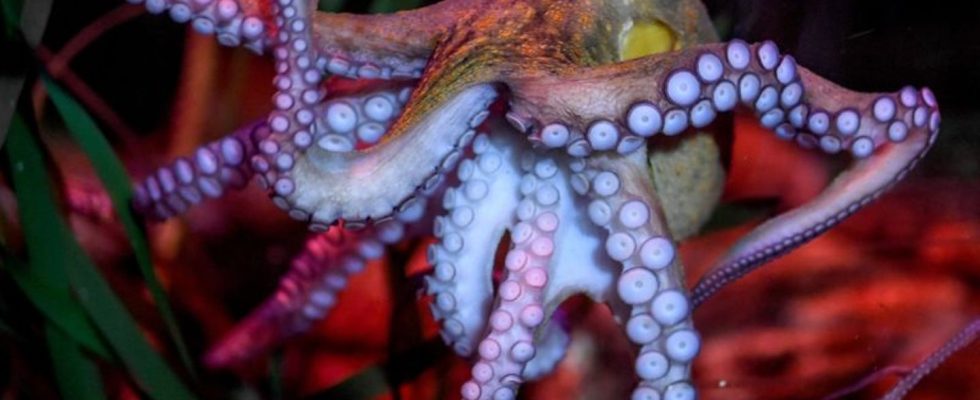A broad coalition of scientists calls for a new way of thinking about the consciousness of animals. They support their theses with a number of animal examples.
Do animals have consciousness? An international coalition of several dozen scientists sees at least a “realistic possibility” for this – and has signed the “New York Declaration on Animal Consciousness”. Their goal is to stimulate more research into this and increase awareness of animal welfare.
The authors of the statement focus their understanding of consciousness on sentience. “This is about the question of which animals can have subjective experiences,” they write. This could include sensory experiences – such as a certain touch or taste – or experiences that feel good or bad, such as joy, pain and fear.
There is strong scientific evidence that mammals and birds are conscious, the statement said. Empirical evidence also suggests that there is at least a realistic possibility of conscious experience for all vertebrates, as well as many invertebrates. But if this exists, “it is irresponsible to ignore this possibility when making decisions that affect this animal,” the declaration concludes.
The declaration does not contain any specific policy recommendations and there is a wide range of views on moral, legal and political issues among the signatories. “There is agreement that certainty about consciousness should not be a prerequisite for weighing up animal welfare risks,” it says. If there is a realistic possibility that an animal has consciousness – for example, that octopuses can suffer – then this possibility should be taken into account in political contexts. For example, when making decisions about whether octopus breeding should be supported.
The website for the declaration lists a whole series of studies that provide evidence that animals are conscious:
– In a 2020 study published in the journal Science, a team from the University of Tübingen reported that crows can be trained to report what they see. The birds were taught to use their head movements to report whether or not they were shown a visual stimulus.
– Octopuses avoid pain and appreciate pain relief: This was the conclusion of a study published in “iScience” in 2021. In the experiment, the octopuses avoided a chamber in which they had received an acetic acid injection. However, if the animals received local anesthesia in this chamber, they developed a preference for it. “In a rat or human, we would conclude from this pattern that the acid injection caused pain that was relieved by the lidocaine, so we should be prepared to draw the same conclusions for an octopus,” the site says New York Declaration.
– Garter snakes appear to recognize themselves in a modified form of the mirror test. The idea behind the mirror test, developed in the early 1970s, is to find out whether the test subject has self-awareness. To do this, a mark is placed on a part of the body that can only be seen in the mirror, and the behavior is then observed: If the test subject explores the marked part of the body in front of the mirror or tries to rub it off, this is considered evidence that it recognized its reflection as itself.
Since snakes rely primarily on smells to find their way around their environment, the study published in the British Royal Society’s journal “Proceedings B” in 2024 used cotton pads that were soaked in different smells: the scent of the adder, along with its own scent the marking of another scent, the other scent alone, the scent of a strange snake and the scent of the strange snake with a marking. In fact, the garter snakes studied their own marked scent longer than any other, suggesting that the animals recognize their own scents and notice when their scent has changed.
– In a 2022 study published in Animal Behavior, a British-led research team described that bumblebees exhibit playful behavior. In one experiment, the insects rolled wooden balls in a way that was consistent with five characteristics of play. For example, rolling the balls had no obvious purpose and was more prominent when the bumblebees were relaxed, which the researchers said suggested they found the rolling enjoyable.
– Three studies published between 2014 and 2017 in various specialist journals showed, on the one hand, that crayfish can experience “fear-like” states – be it in situations in which they were exposed to light stimuli or electric shocks, or after fights with other species. On the other hand, the animals reacted to anxiety-relieving medication and, when treated in this way, for example, overcame their fear of a brightly lit labyrinth.
– Common shore crabs use memory to weigh things up when faced with a difficult decision. At least two researchers from Great Britain drew this conclusion after experiments with the animals. For a study published in “Animals” in 2024, they examined how the shore crabs weigh their aversion to bright light against their aversion to electric shock. So the animals usually sought shelter to escape the bright light, but preferred the light if they had been shocked in that shelter in the past. According to the researchers, their decision depended on how intense the shock was and how bright the light was.
Study on crows (Science) The New York Declaration on Animal Consciousness Study on beach crabs (Animals) Study 2 on crabs (Journal of Experimental Biology) Study on octopuses (iScience) Study on garter snakes (Proceedings of the Royal Society B) Study on bumblebees ( Animal Behavior) Study 1 on crabs (Science) Study 3 on crabs (Scientific Reports)

